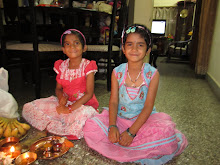Thousands of tourists make a beeline ever day to the villages of Belur and Halebidu to gaze in awe at the magnificent temples left behind by the Hoysalas. Tour operators too have cashed in on the rich heritage of Hassan district where these two villages are situated by adding Shravanabelogola to the tour programme.
If the temples of Belur and Halebiud stand our for its architecture, no less wonderful is the huge monolith statue of Gomateshwara in Shravanabelogala. These three towns form the tourist circuit and tourists are rarely if ever taken to other nearby areas where equally exquisite temples, Jain Basadis and other structures, mainly belonging to the Hoysala dynasty still exist.
One such place is Hulikere which is just five kilometers from Halebidu.
Hulikere is a small hamlet in what was once part of the huge Dwarasamudra city, the capital of the Hoysalas which was repeatedly sacked by the Delhi Sultans, particularly under the generalship of Malik Kafur.
Today, no trace of Dwarasamudra remains and the only monuments that testify to the once glorious capital are the many temples in Halabidu and a few scattered temples and other structures around the area.
Hulikere too formed part of the extinct Dwarasamdudra. Today, Hulikere is on the Hagare road and it is in the limelight for the only known Kalyani built by the Hoysalas that still stands the test of time.
As cane be expected of the Hoysalas, the Kalyani for them is not a mere well or a structure to hold water. It is a beautiful structure with small temples all round. The Kalyani is about 60 feet deep and it resembles a well built below the ground level.
The Kalyani is ringed on all sides by steps that lead to the water in the well. There are 12 sanctums with pinnacles (Shikharas) and 14 sanctums without pinnacles.
The 12 sanctums represent the twelve Zodiac signs. The total number of structures around the Kalyani-27-stands for the 27 stellar constellations.
The 12 sanctums represent the twelve Zodiac signs. The total number of structures around the Kalyani-27-stands for the 27 stellar constellations.
The water in the well and the 27 structures surrounding it represent the celestial sphere and its different constellations. This discovery shows that the Hoysalas could easily blend astronomy with architecture.
Inscriptions in the area ascribe the construction to Chattaya, a local chieftian who owed allegiance to the Hoysalas and this was possibly constructed during the reign of Vishnuvardhana or Bitti Deva, the Hoysala Emperor, who built the temples at Halebidu.
Unlike other wells built by the Hoysalas, some of which still survive in the Halebidu-Belur region, the Hulikere structure is ornamented with sculptures. It has thirty steps which lead to the water in three stages.
Disfigured statues of several Hindu gods such as Vishnu, Shiva, Surya and others are placed around the well. The statues were taken out of the well by ASI officials and placed in the present position.
The Kalyani is about 950 years old and locals say that it was the place where Shantala, the chief queen of Vishnuvardhana, took her bath. Security was so tight at this place when the Queen took her bath, that not even a tiger could enter the premises. Hence, the name Hulikere.
Shankatala was unmatched for beauty and dancing skills. She was a devout Jain and she was the daughter of a Hoysala General. She agreed to marry Vishnuvardhana only if he agreed to marry her childhood friend Lakshmi.
Vishnuvardhana, who all along had decided against marriage, was so infatuated by the beauty and simplicity of Shantala that he agreed to her terms. When the marriage took place, Vishnuvardhana ended up marrying seven women, including Shantala and Lakshmi.
Vishnuvardhana and Shantala had a son and daughter. The daughter was born sick and there are inscriptions that say she died young. A heartbroken Shantala committed suicide by throwing herself from the cliffs of Shivagange now in Tumkur district. There is a point in the hill which is called by her name. She prayed at the place before jumping to her death. Another story of her death and this one is by Jains is that she undertook Sallekhana or fats unto death at Shivagange.
Even today, you can see a matchless carving of Shantala in the Hoysaleswara temple in Halebidu.
Another important legend connecting Hulikere with the Hoysalas is of their founder King, Sala, staying at this very place for several years.
Sala was young and he was just building the Hoysala Empire. Historian and epigraphist, Prof. S Settar also confirms that Sala did stay in Hulikere.
Historians say that the well was built exclusively to supply water for Abhisheka in the temple of Halebidu
Another record says that Vishnuvardhana saw the old temple when he was proceeding from Belur to Halebidu. He immediately gave grants to the temple, had it renovated and ensured that the worship was carried on uninterrupted. The grants included dry and wet lands, a tank, oil mills for supply of oil to burn lamps in the temple and money for establishing a Brahmin settlement with two rows of houses.

"Sala was young and he was just building the Hoysala Empire. Historian and epigraphist, Prof. S Settar also confirms that Sala did stay in Hulikere."
ReplyDeleteThis means Sala was for real and not an imaginary one? Also, can you please share where Prof.Settar says this?
Yes, Mr. Venkataraman,
DeleteSala was as real a figure as other personalities of history. He did initially stay at Hukikere. Yes, we will share other remarks of Prof. Shettar on Sala and the Hoysala Empire in another post to be published soon.
Thanks